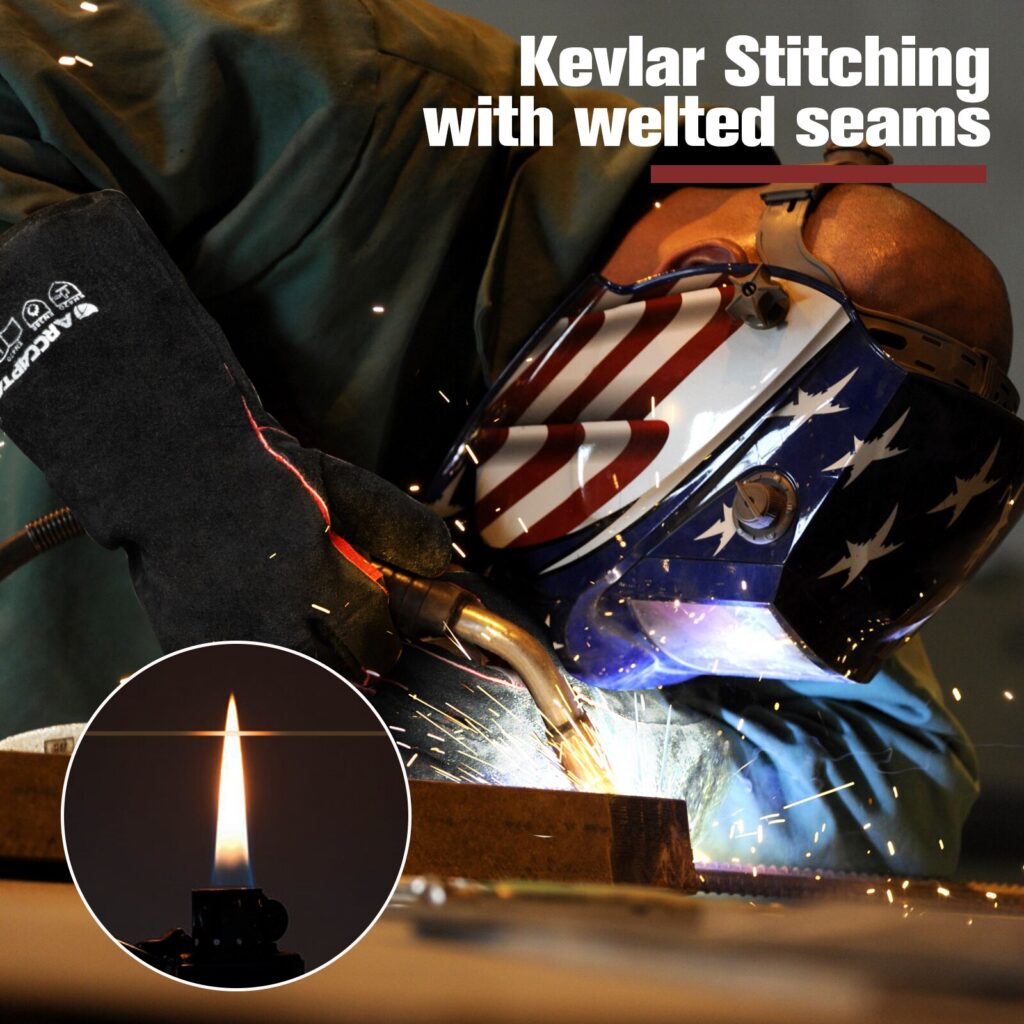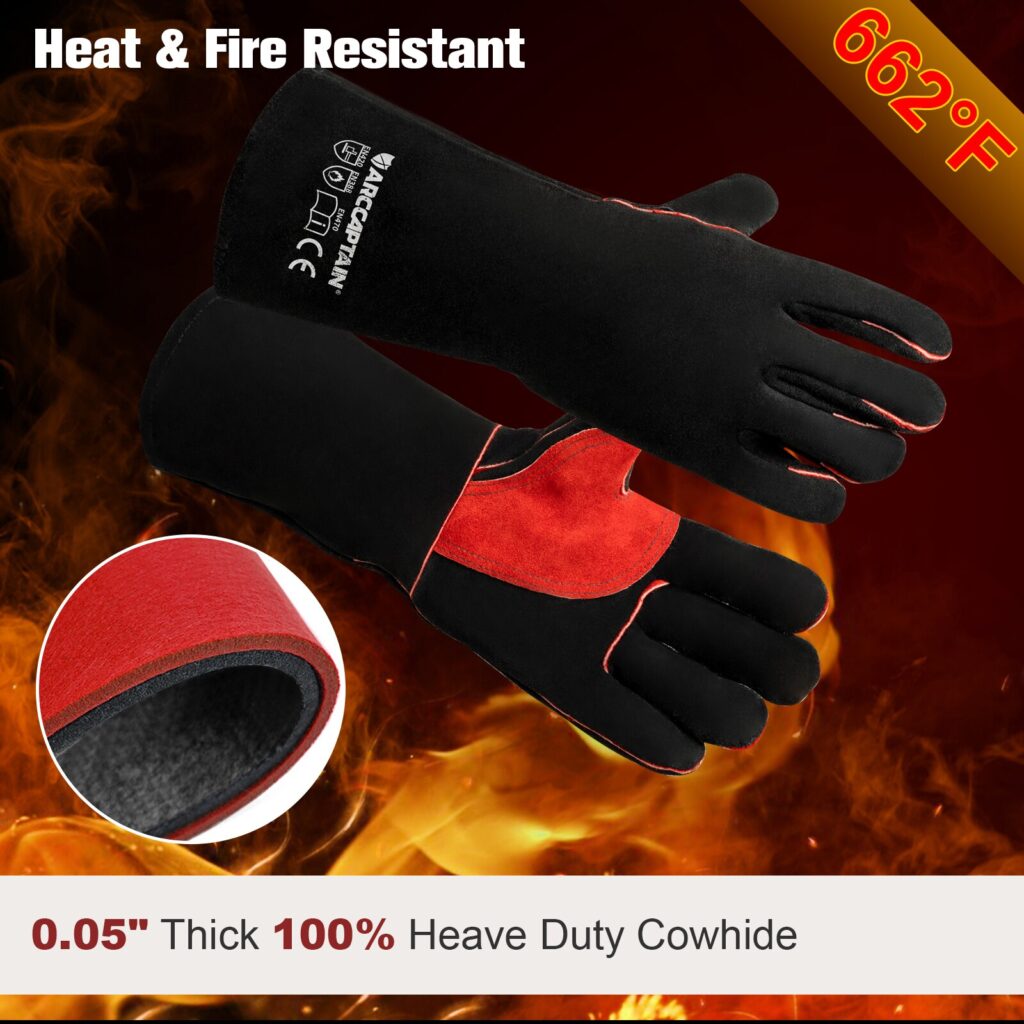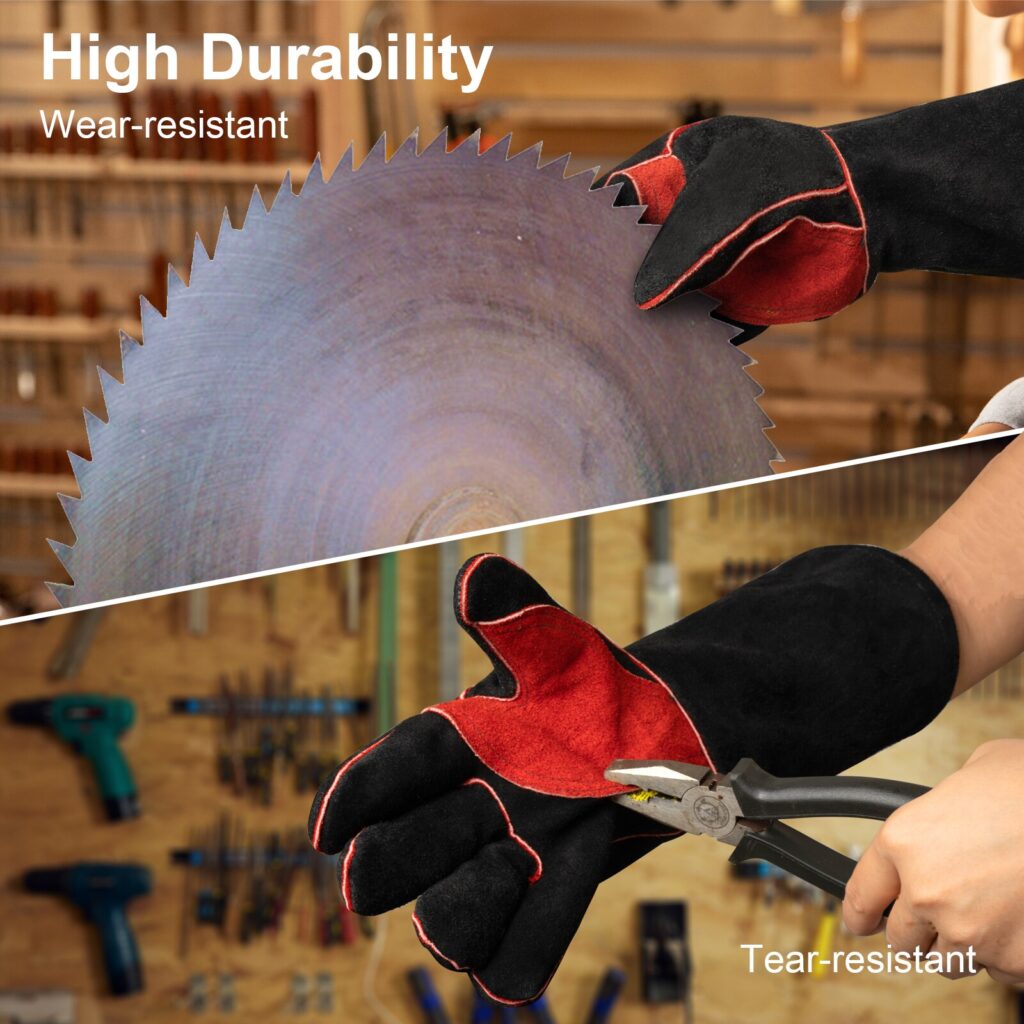When it comes to welding, safety should always be your top priority. Among the various safety gear and equipment, welding gloves play a crucial role in shielding your hands from the hazards of this high-temperature and high-risk profession. In this extensive guide, we’ll delve deep into the world of welding gloves, exploring the different types available, top brands, and why choosing the best welding gloves is essential for your safety.

I. Introduction
Welding is a skilled trade that demands precision and expertise. However, it’s also an occupation fraught with dangers. One of the most significant hazards in welding is exposure to extreme heat, sparks, and molten metal. This is where welding gloves come into play. These specialized gloves are designed to protect your hands and wrists from the perils of welding.
In this article, we will navigate through the various aspects of welding gloves, including the types of gloves available, the top brands in the market, and the crucial factors to consider when selecting the best welding gloves for your needs. So, whether you’re a professional welder or a hobbyist, read on to ensure you have the right hand protection in your welding arsenal.
II. Types of Welding Gloves
1. Welder Gloves
Welder gloves, often considered the standard in welding safety gear, are designed to offer protection against heat, sparks, and splatter. These gloves are versatile and suitable for various welding processes, making them a popular choice among welders.
2. TIG Welding Gloves
TIG welding gloves, known for their precision and control, require gloves that provide dexterity and tactile sensitivity. TIG welding gloves are thinner and more flexible, allowing welders to handle the torch and filler rod with precision while maintaining protection.
3. Stick Welding Gloves
Stick welding gloves are designed to withstand high levels of heat and sparks. Therefore, stick welding gloves are typically thicker and more heat-resistant. They provide excellent protection against the intense heat and splatter associated with this welding process.
4. Leather Welding Gloves
Leather welding gloves are known for their durability and resistance to heat and abrasion. These gloves are available in various styles, including MIG, TIG, and stick welding variants, making them a versatile choice for different welding applications.
5. Women’s Welding Gloves
Safety gear should be comfortable and well-fitting for everyone. Women’s welding gloves are designed with the unique hand shape and size of female welders in mind, ensuring a secure and comfortable fit.
6. Custom Welding Gloves
For those who demand the utmost in comfort and protection, custom welding gloves can be tailored to fit your hands perfectly. These gloves are crafted to your specifications, offering a personalized and snug fit.

III. Top Brands in Welding Gloves
When it comes to welding gloves, choosing a reputable brand can make a significant difference in the quality and durability of your safety gear. Here are some of the top brands known for producing high-quality welding gloves:
1. Tillman Welding Gloves
Tillman is a well-established name in the welding industry, renowned for its wide range of welding gloves designed to meet the needs of professional welders. Their gloves are known for their durability and superior protection.
2. Black Stallion Welding Gloves
Black Stallion is another trusted brand offering a variety of welding gloves that cater to different welding processes. Their gloves are known for their excellent heat resistance and comfort.
3. Miller Welding Gloves
Miller is a respected name in the welding world, and their welding gloves are no exception. Miller welding gloves are designed to provide superior protection without compromising on comfort.
IV. What Gloves are Best for Welding?

Selecting the best welding gloves for your specific needs is essential to ensure your safety and comfort during welding projects. Here are the key factors to consider:
- Material: Welding gloves are typically made from leather, with cowhide and goatskin being common choices. Each material offers its unique benefits, such as heat resistance and durability.
- Type of Welding: Consider the welding process you primarily engage in. TIG welders may prefer thinner gloves for better control, while stick welders require thicker gloves for heat resistance.
- Fit: A proper fit is crucial. Ill-fitting gloves can be uncomfortable and may compromise your safety. Ensure the gloves are snug but not too tight.
- Heat Resistance: Verify that the gloves you choose are rated for the level of heat generated in your welding process.
- Dexterity: If your welding tasks require precision, opt for gloves that allow you to maintain good control over your tools and materials.
- Comfort: You may be wearing these gloves for extended periods, so choose gloves that are comfortable and breathable.
V. Protection Offered by Welding Gloves
Welding gloves are designed to protect you from a range of hazards associated with welding:
Heat and Burns
Welding gloves are heat-resistant and provide a barrier against burns caused by high temperatures and molten metal.
Sparks and Splatter
They shield your hands from sparks and molten metal splatter that can result from the welding process.
Electric Shock
Welding gloves are non-conductive, reducing the risk of electric shock when working with live electrical components.
UV Radiation
They offer protection against harmful UV radiation emitted during welding processes.
Abrasions
Welding gloves also protect against abrasions, ensuring that your hands remain safe and intact during work.
VI. Should Welders Wear Gloves?
The short answer is yes—welders should always wear appropriate welding gloves. Not only is it a best practice, but it is often a requirement set by safety regulations and guidelines in the welding industry. Here are some reasons why wearing gloves is crucial:
- Safety: Welding gloves are the first line of defense against burns, sparks, and other hazards. They significantly reduce the risk of injury.
- Compliance: Many safety standards and regulations mandate the use of personal protective equipment, including welding gloves, in welding workplaces.
- Comfort: Welding gloves are designed for comfort, allowing you to work efficiently and without discomfort.
VII. Common Hand Discomfort in Welding
Despite wearing welding gloves, welders may sometimes experience hand discomfort. Here are some common issues and tips for addressing them:
- Hand Fatigue: Prolonged welding can lead to hand fatigue. Take breaks to rest your hands and stretch your fingers.
- Sweating: Sweating inside your gloves can be uncomfortable. Choose gloves with breathable materials or use cotton liners to absorb moisture.
- Irritation: Some welders may develop skin irritation due to prolonged glove use. Ensure your gloves are clean, and consider using barrier creams.
VIII. What Should Welders Avoid?
To ensure your safety while welding, here are some practices to avoid:
- Welding Without Gloves: Never attempt to weld without the appropriate gloves. It’s a recipe for disaster.
- Using Incorrect Gloves: Using gloves not designed for welding or using gloves that are damaged can compromise your safety.
- Neglecting Safety Precautions: Always follow safety guidelines and procedures, including using other necessary safety gear like welding helmets and safety glasses.
- Poor Fit: Ill-fitting gloves can lead to discomfort and reduced dexterity. Ensure your gloves fit properly.
Conclusion
Welding gloves are your first line of defense against the hazards of welding, offering protection against heat, sparks, and molten metal. Choosing the best welding gloves is essential for your safety and comfort on the job. Consider factors like material, type of welding, fit, heat resistance, and dexterity when selecting the right gloves for your needs.
Investing in high-quality welding gloves from trusted brands like Tillman, Black Stallion, and Miller is a wise choice that will pay off in terms of safety and durability. Remember that compliance with safety regulations and guidelines is essential, and wearing gloves is a non-negotiable aspect of welding safety.
Your hands are your most valuable tools as a welder, and protecting them with the right gloves is an investment in your well-being. So, whether you’re a seasoned welder or just starting your welding journey, make sure you have the best welding gloves at your disposal. Your hands will thank you.
Additional Resources
For a wide selection of welding gloves, including top brands and various styles, visit WeldingSafetyGear.com.
For comprehensive welding safety guidelines and tips, refer to OSHA’s Welding, Cutting, and Brazing regulations.
Remember, safety is paramount in welding, and the right gloves are a critical part of your safety gear.

